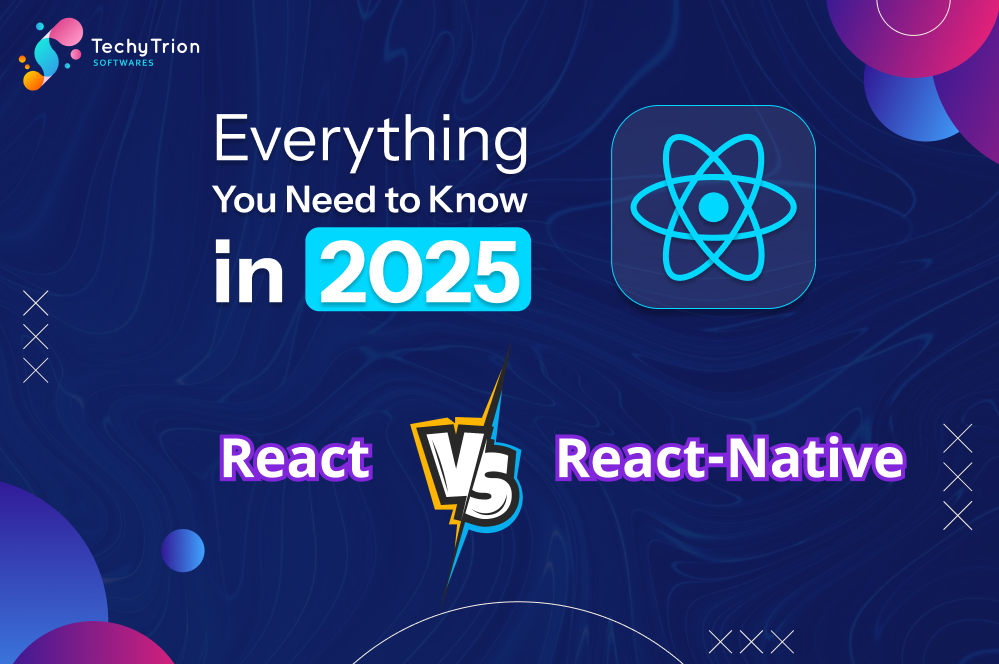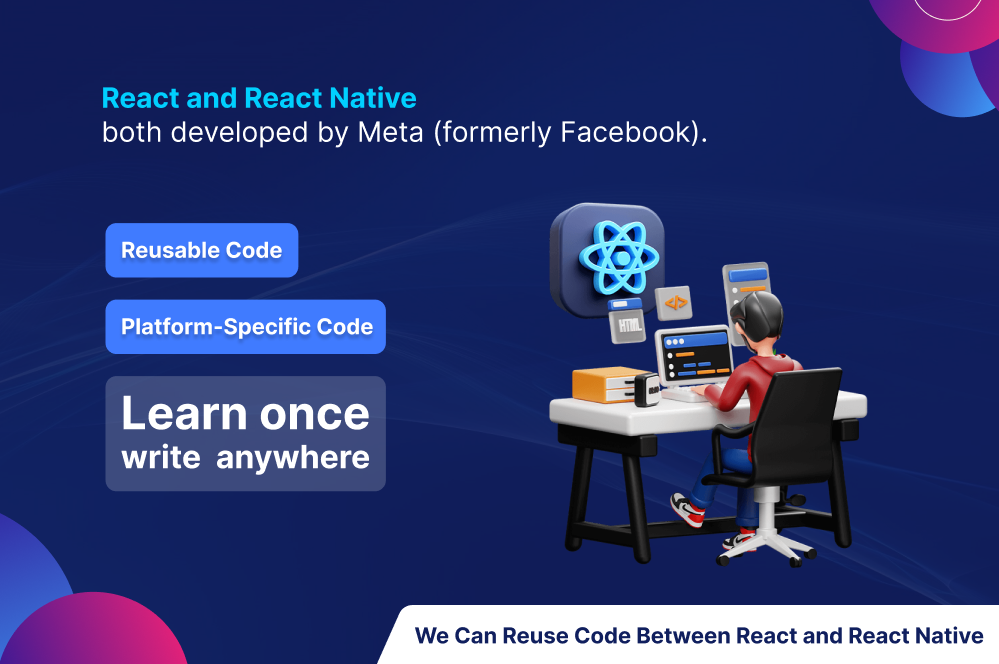
Introduction
In today’s digitally-first era, businesses and developers look for efficient ways to build responsive, scalable, and modern applications. Two of the greatest technologies driving this innovation are React and React Native — both developed by Meta (formerly Facebook).
Although sharing the same fundamentals and syntax, React and React Native fundamentally have very dissimilar roles to play. In case you are confused about what to choose for your
upcoming project or you simply want to get an idea about what is different between the two, you are reading this correct blog.

What is React?
React is a JavaScript library used to build user interfaces, especially single-page applications (SPAs). It was created in 2013 and soon became the standard for modern web development.
Core Concepts of React:
- Component-Based Architecture: Your UI is segmented into isolated, reusable components (e.g., buttons, forms, or nav bars). This keeps code organized and simple to test.
- JSX (JavaScript XML): React utilizes JSX, where you can utilize HTML tags in JavaScript. It is easy for developers to define UI structure.
- Virtual DOM: Instead of changing the entire web page, React changes only those areas that are different — it is more efficient and quicker.
- Unidirectional Data Flow: One-direction data flow in React, i.e., from parent components to child components. This gives a straightforward data structure, where bugs are eliminated.
- React Hooks: New React (since version 16.8) uses Hooks like useState and useEffect to manage state and side effects in functional components.
When to Use React:
- Web applications (dashboards, SaaS, e-commerce sites)
- Complex, data-intensive interfaces
- Applications that require performance and scalability

What is React Native?
React Native is a JavaScript library to create cross-platform mobile apps for Android and iOS using the same React principles. Released in 2015, it allows developers to create mobile apps in JavaScript and React — no Swift, Java, or Kotlin needed.
Key React Native Concepts:
- Native Components
Instead of using HTML and CSS, React Native utilizes native UI elements compiled down from elements like <View>, <Text>, and <TouchableOpacity>. - Cross-Platform Codebase
With React Native, you can write one codebase that will run on Android and iOS, reducing development time and cost. - JavaScript Bridge
React Native communicates with native modules via a bridge, offering access to hardware capabilities like camera, GPS, and notification. - Expo Ecosystem
Expo is an environment that’s built on top of React Native that simplifies setting up and deploying. It’s perfect for prototyping quickly or learning
When to Use React Native:
- You want to deploy apps on Android and iOS quickly.
- Your team already knows JavaScript/React.
- You’re building apps that don’t require aggressive native performance (games or VR).

Can You Reuse Code Between React and React Native?
Yes — but with limitations.
- Reusable Code: Business logic, API calls, utilities, and state management can be reused (e.g., Redux, Context API).
- Platform-Specific Code: UI components, layout, and navigation usually differ between web and mobile.
- Tools to Help: Monorepos (using Nx, TurboRepo) can help share code across web and mobile in one project.
Conclusion
React and React Native are both great tools that share a philosophy: “Learn once, write anywhere.” React is optimized for the web, and React Native brings the possibilities of mobile development — in JavaScript.
Once you’re comfortable with their strengths and how they’re different from each other, you can use the correct tool for the task and create fantastic apps with confidence.





 Book call
Book call



